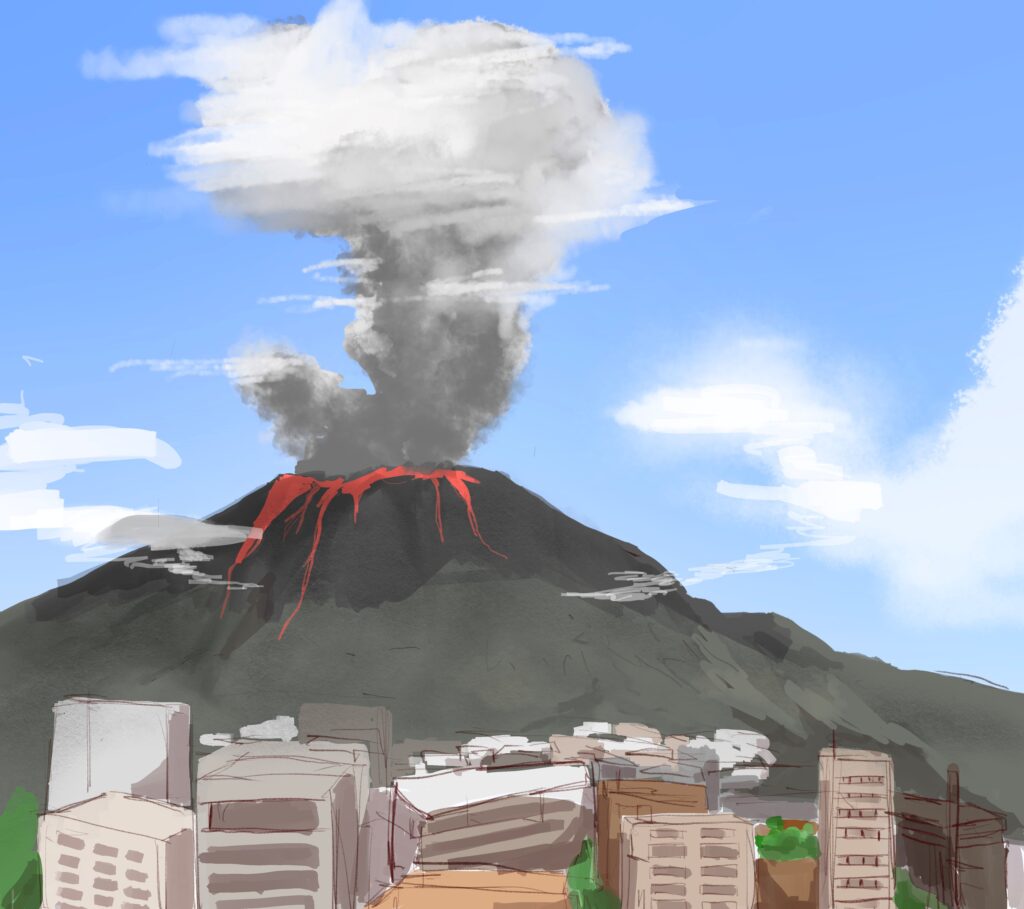
The volcano spews out – at hundreds of degrees in temperature – a mixture of ash, pumice, rocks and volcanic gases – called a volcanic debris flow, which pours out at speeds of over a hundred km per hour, burning up all objects in its path. Please evacuate as quickly as possible to a safe place, to avoid being engulfed.
Liquid-like magma, called a lava flow, moves slowly from higher to lower ground and the earth, after the flow passes through, forms a lava earth, which is usually more damaging to solid objects than to people.
The pressure of the magma and the effects of the eruption cause the volcano itself to collapse, instantly burying a large area in sediment. If it flows into the ocean, it is likely to cause a tsunami. Such a situation can only be evacuated before the event.
Special attention should be paid to rainfall after an eruption, as volcanic mudslides are likely to occur. Also, after the immediate volcanic eruption ends, it will in fact continue to erupt for years or decades to come and as it is difficult to recover quickly, it is best to move as far away from the volcano as possible.
Following a volcanic eruption, volcanic ash and other harmful gases fill the air and with the wind, air quality becomes a serious health hazard, so cover your mouth and nose or wear a gas mask and evacuate as soon as possible.
With a snow-covered volcano erupting in winter, beware that as the snow and ice covering the volcanic ash melts, the ash and soil together form a mudslide and it is most important to alert the downstream areas and to stay away from valleys and rivers.
Volcanic eruptions are likely to cause large volcanic earthquakes, and if they occur at the bottom of the sea they may also cause tsunamis.